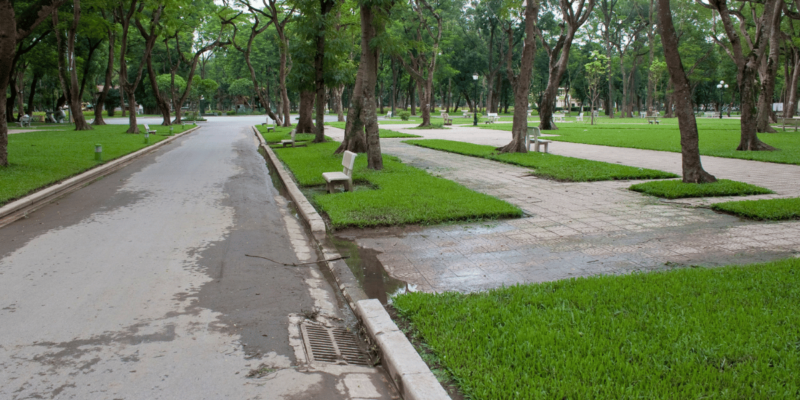Hanoi – A Tapestry of Cultural and Historical Richness
Hanoi, the capital city of Vietnam, stands as a testament to the country’s rich cultural and historical heritage. As one of the oldest capitals in Southeast Asia, Hanoi offers a unique blend of ancient traditions and modern advancements. Its streets echo with stories from a thousand years of history, making it a vibrant tapestry woven from diverse cultural influences and historical events. This article delves into Hanoi’s historical background, cultural heritage, architectural wonders, culinary delights, traditional craft villages, museums, and its modern-day developments, providing a comprehensive overview of what makes this city a symbol of Vietnam’s identity.
Historical Overview
Hanoi’s history dates back over a millennium, beginning as Thang Long (Ascending Dragon) in 1010, when Emperor Ly Thai To established it as the capital of the Ly Dynasty. Over the centuries, Hanoi has been the heart of various dynasties, each leaving its mark on the city’s culture and architecture. The French colonial period brought significant changes, introducing European architectural styles and modern infrastructure. Following Vietnam’s independence in 1945, Hanoi became the capital of a unified Vietnam, playing a crucial role during the Vietnam War and subsequent national reunification. Major events, such as the August Revolution and the Tet Offensive, have shaped Hanoi into the resilient and culturally rich city it is today.
Cultural Heritage
Hanoi’s cultural heritage is a blend of traditional Vietnamese, Chinese, and French influences. The Old Quarter, with its narrow streets and bustling markets, preserves the layout and lifestyle of ancient Hanoi. Hoan Kiem Lake, a central landmark, is steeped in legend and serves as a serene gathering place for locals. The Temple of Literature, Vietnam’s first university, symbolizes the city’s dedication to education and culture. Hanoi is also known for its vibrant festivals, such as Tet (Lunar New Year) and the Mid-Autumn Festival, which showcase traditional music, dance, and crafts. These cultural sites and events highlight the rich heritage that continues to thrive in modern Hanoi.
Architectural Wonders
Hanoi’s architectural landscape is a captivating blend of ancient, colonial, and modern styles. The Ho Chi Minh Mausoleum, an imposing structure, houses the embalmed body of the country’s revered leader. The Hanoi Opera House, built during the French colonial era, exemplifies European elegance and serves as a cultural hub. St. Joseph’s Cathedral, with its neo-Gothic design, stands as a symbol of French architectural influence. Modern developments, such as the Lotte Center and Keangnam Hanoi Landmark Tower, add to the city’s skyline, showcasing its growth and modernization. This unique architectural diversity reflects Hanoi’s complex history and evolving identity.
Culinary Delights
Hanoi’s culinary scene is renowned for its diversity and depth of flavor, reflecting the city’s rich cultural heritage. Pho, a fragrant noodle soup, is perhaps the most famous dish, enjoyed at all hours of the day. Bun Cha, a dish of grilled pork served with noodles and herbs, gained international fame when President Obama dined on it during his visit. Egg Coffee, a unique Hanoian creation, blends strong Vietnamese coffee with a creamy egg yolk mixture. The city’s vibrant street food culture, with bustling markets and roadside stalls, offers a sensory feast, allowing visitors to experience the authentic flavors of Hanoi.
Traditional Craft Villages
Hanoi is surrounded by traditional craft villages that preserve ancient artisanal techniques. Bat Trang pottery village, known for its fine ceramics, offers a glimpse into centuries-old pottery-making traditions. Van Phuc silk village produces exquisite silk garments, continuing a legacy that dates back over a thousand years. These villages not only contribute to the local economy but also play a vital role in maintaining and promoting Vietnam’s cultural heritage. Visiting these villages provides insight into the craftsmanship and dedication that sustain these traditional arts in a rapidly modernizing world.
Museums and Historical Sites
Hanoi’s museums and historical sites are gateways to understanding Vietnam’s complex history. The Vietnam Museum of Ethnology offers comprehensive exhibits on the country’s diverse ethnic groups. Hoa Lo Prison, famously known as the “Hanoi Hilton” during the Vietnam War, provides a stark reminder of the city’s tumultuous past. The National Museum of Vietnamese History showcases artifacts spanning thousands of years, from ancient dynasties to modern times. These institutions serve to educate both locals and visitors about Vietnam’s rich history and cultural diversity, preserving the nation’s legacy for future generations.
Modern Hanoi
Modern Hanoi is a dynamic city that balances its historical roots with rapid development. Skyscrapers, shopping malls, and modern infrastructure stand alongside ancient temples and colonial buildings, creating a unique urban landscape. The city’s lifestyle reflects this blend of old and new, with traditional markets operating near modern supermarkets. Emerging trends in technology, fashion, and cuisine continue to shape Hanoi’s identity. Despite these changes, the city remains deeply connected to its cultural heritage, ensuring that the essence of Hanoi endures amidst modernization.
Conclusion
Hanoi, with its rich tapestry of cultural and historical richness, stands as a symbol of Vietnam’s enduring spirit and heritage. The city’s blend of ancient traditions, colonial influences, and modern developments creates a unique and captivating urban experience. Preserving Hanoi’s cultural and historical sites is crucial for maintaining its identity and educating future generations. As Hanoi continues to evolve, it remains a vibrant testament to the resilience and cultural richness of Vietnam, embodying the nation’s past, present, and future.




